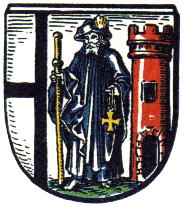|
Allenstein (1920) Stamp-issuing status: inactive; Population: 540,000 (1920 estimate). A district of East Prussia, Allenstein became the subject of a dispute at the Paris Peace Conference at the end of World War I. The French and British were looking for territory to widen Poland's corridor to the Baltic. They harbored the mistaken notion that Poles constituted a majority of the district's population. The strenuous objections of the German delegation convinced the Conference to put the question to a vote. The Treaty of Versailles required the evacuation of German troops and administrators until such time as the matter could be resolved by plebiscite. German stamps overprinted for Allenstein were used during the plebiscite period. These stamps were sold at a multiple of face value, with the excess money collected used to fund the plebiscite process. The result of the plebiscite conducted on July 11, 1920 was a near unanimous 97.9% in favor of remaining in Germany. The Allies had not only under estimated the strength of the German element but completely misunderstood the character of the district's Slavic population. Allenstein's Slavs were primarily Masurian and not Polish. They spoke a dialect akin to Polish but shared the Lutheran faith and conservative politics of Allenstein's Germans. The primarily Slavophone town of Sensburg for example cast 34,334 votes for Germany vs 25 for Poland. The Inter-Allied Control Commission withdrew and returned control of Allenstein to Germany on August 20, 1920. The city was heavily damaged when the Red Army captured it in January 1945. It was annexed to Poland at the end of World War II. The German population was expelled and the newly christened "Olsztyn" was repopulated with Polish refugees from the now Soviet regions of prewar Poland. |

Back to Online Stamp Collections
